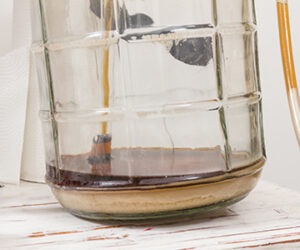Selecting Yeast for Beginners
As the saying goes, “brewers make wort, yeast make beer.” So, it is important — whether developing a new recipe or ordering a kit already assembled by a retailer — to put some careful thought into selecting the yeast that will make the beer you envision. The yeast is responsible for much of a beer’s final profile, so don’t overlook the importance of picking one that works with, and adds to, the rest of the recipe. Kits usually come with all of the grains, hops, and other additives required to brew the recipe,however the yeast is often sold separately. A yeast strain may be recommended, but with hundreds of different strains available to homebrewers from various companies it is important to understand the difference between two yeasts that may both be recommended for the style of beer you are going to make.
As a beginning homebrewer, it makes sense to start by only considering a yeast recommended for the beer style you are making. A great resource to determine potential yeasts is at https://byo.com/resource/yeast/, where common strains available to homebrewers from the major suppliers can be sorted by appropriate beer style. With a narrowed down list of yeasts, how should you go about making a decision on which one you entrust your wort to? The most important things to consider are the flavor profile, flocculation and attenuation characteristics, alcohol tolerance, and temperature it can ferment at. Get a good idea of what you want to get out of your yeast and then a good place to start are the yeast manufacturers’ websites.
Flavor profile: All yeast strains produce unique esters, phenols, and higher alcohol profiles. What contributing flavors are listed with this yeast? Does it add a taste of nuttiness, is it sweet, does it contribute fruity esters? How do those flavors play with the rest of the recipe and final taste you are looking for? Does it help accentuate other ingredients or characteristics, will it take away from those ingredients, or is it more neutral in character?
Flocculation: The better a yeast’s flocculation rate the more quickly the yeast will fall out of suspension. A high flocculent will result in a clearer beer and a firmer yeast cake at the bottom of your fermenter (making it easier to rack your beer without also racking the yeast). Highly flocculent strains are also often associated with elevated diacetyl levels in finished beers, which leads to buttery or butterscotch off-flavor. Less flocculent yeasts may leave more yeast in suspension, contributing a yeasty character to the beer (a good thing for a hefeweizen, but maybe not so good for a pale ale).
Attenuation: Higher attenuating yeasts will consume more sugar, thus leaving the resulting beer dry. Lower attenuating yeasts will leave more sugar, resulting in a sweeter beer. So if you want a bone dry IPA, make sure your yeast is a high attenuater.
Alcohol and temperature tolerance: Alcohol tolerance is usually only a factor when making very high ABV beers, but if you are brewing a 10% ABV imperial stout, make sure that the yeast you pick can survive in that environment. Similarly, if you are fermenting in uncontrolled temperatures and expect it to be very warm or cool, check to make sure the yeast can handle those temperatures. You don’t want an incomplete fermentation.
Take notes during fermentation about the temperature, flocculation, time to ferment, etc., and then once the beer is done, evaluate the yeast’s contributions and make note of it as well. This will help you the next time you set out to make a beer of a similar style, and offer more insight regarding the yeast you have experienced first-hand.



